John Hurrell – 15 February, 2017
The three works are a nice combination. The two ‘acronym' works have an impressive scale where their full stops (three in each) become sensitively positioned discs hovering at the base of the sans serif letters. By chance these austere minimalist abbreviations (with these dots) hint at a conversation with Gordon Walters' larger koru paintings, like the beautiful late work recently shown in Gow Langsford, even though there is no referencing of the positive/negative interaction that was Walters' trademark.
In this Starkwhite installation of three historic ‘Transaction’ works - Apple’s N.F.S. (1987), his P.O.A. (1987) and his working drawing o for an earlier For Sale painting (1961), made by his corporeal and mental predecessor, the artist Barrie Bates, a year before he became the living artwork, Billy Apple - we see an examination of some aspects of the intricate processes of selling.
The three works are a nice combination. The two ‘acronym’ works have an impressive scale where their full stops (three in each) become sensitively positioned discs hovering at the base of the sans serif letters. By chance these austere minimalist abbreviations (with these dots) hint at a conversation with Gordon Walters’ larger koru paintings, like the beautiful late work recently shown in Gow Langsford, even though there is no referencing of the positive/negative interaction that was Walters’ trademark, and the letters tower over the circles.
The two canvas paintings, with their tonally opposing figures and grounds, also differ in their modes of presentation. The white one with black letters is hanging on a wall, and indeed, chromatically is absorbed into it; the other - a dark grey slab with white letters - is exposed in a flat plywood crate, leaning open with its lid lying on the floor.
P.O.A. (Price On Application) insists that you chat with the dealer, and persuade her/him of your sincere interest in purchasing the work. If they are convinced that you are a genuinely potential owner they will present you with the (normally undisclosed) price. That private conversation is referenced in the three letter text presented on the canvas’s surface. The fiscal content is secret but that it was divulged is not.
N.F.S. (Not For Sale) is here deliberately not separated from its protective box. It is a painting that you can look at but never own. It might be available for borrowing, but that depends on the artist’s inclination, for he as owner tightly controls its viewing conditions and its audience, and he might not wish to lend it. Then again he might, and he might allow the crate to be removed too. It is all about the owner’s call; the power of controlling.
It is also about the power of teasing, for this is one of the most beautiful paintings Apple has ever made. It has a perfect dark pencil lead grey. Yet no institution or collector can possess it. It is his alone. A nice perverse irony.
For Sale baldly states the motivation for the early painting’s production, the only reason for its existence - to make money. This working study that exalts the pleasures of the processes of commerce - a mocked up mental clarification on paper - is in surprisingly good condition from being kept in Apple’s archives. It is 56 years old. The visual testing of a thought that now, in itself, in elucidation, has enormous currency.
John Hurrell
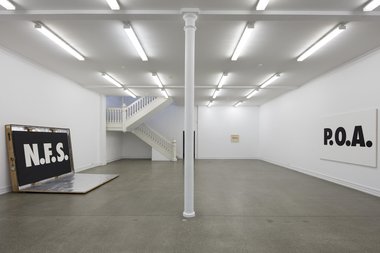


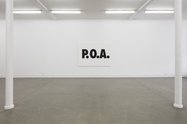
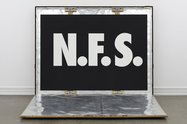
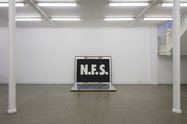
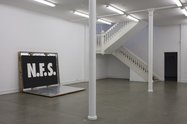
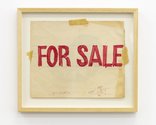

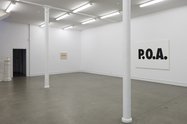
 Two Rooms presents a program of residencies and projects
Two Rooms presents a program of residencies and projects Advertising in this column
Advertising in this column



This Discussion has 0 comments.
Comment
Participate
Register to Participate.
Sign in
Sign in to an existing account.